Bhot Bagan Math: Remnant of a glorious chapter of Tibetan Buddhist era - GetBengal story
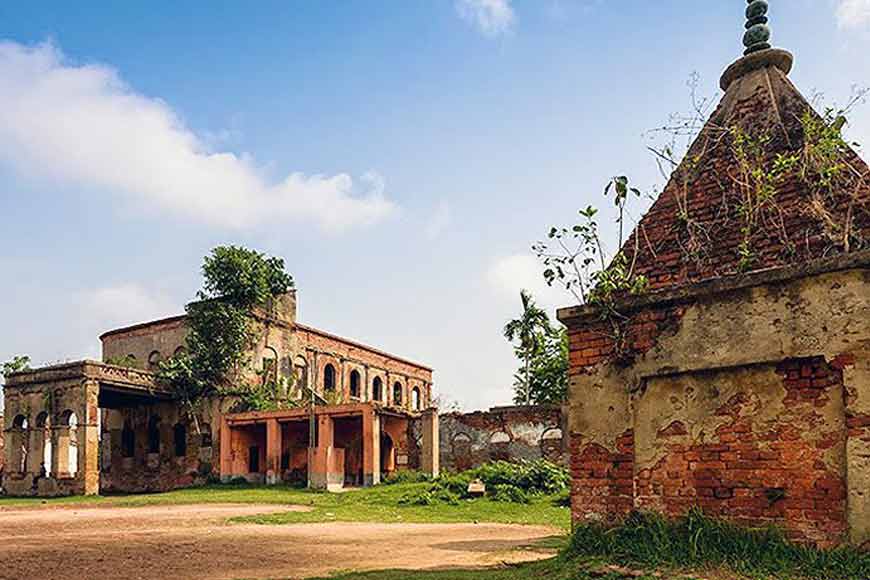
The main structure in Bhot Bagan math
Bengal was a bastion of the early classical Buddhism as a socio-cultural force until the 12th century AD and played a pivotal role in expanding Buddhism in Tibet that eventually became the dominant cultural form in the Himalayan kingdom. However, not many in Kolkata are aware of a former Tibetan Buddhist monastery that lies on the west side of Hooghly River at Ghusuri, a bustling industrial suburb of modern day Howrah town. The once-famous Bhot Bagan Math was constructed way back in 1776 and happens to be the oldest Tibetan Buddhist monastery outside the Himalayas and the first one in the plains of India. The word ‘Bhot’ possibly originated from the Tibetan word “Bod”, meaning Tibet. ‘Bagan’ in Bengali means garden, and ‘Math’ is a monastery. It is a unique monastery with a rare influx of Shaiva and Tibetian Buddhist traditions in its origin.
There is an interesting story behind the construction of the monastery. The Panchen Lama is one of the most important figures in the Gelug tradition, with its spiritual authority second only to the Dalai Lama. Lobsang Palden Yeshe, the third Panchen Lama, was keen to restore the connections between Tibetan Buddhism and India as it was in the 11th - 13th century. So, in 1774, he conveyed his wish to the English representative, Edward Bogle, to establish a Tibetan Buddhist monastery near Calcutta, the newly formed capital of colonial India, and sought a plot on the west bank of Hooghly River to fulfill his dream project.
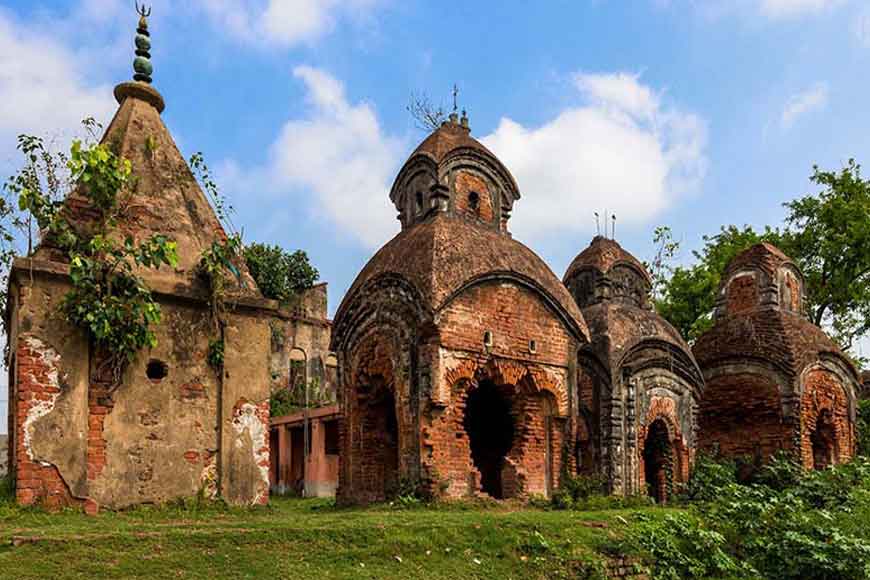 Bhot Bagan Math in Ghusuri, Howrah, is the first Tibetan Buddhist temple in India
Bhot Bagan Math in Ghusuri, Howrah, is the first Tibetan Buddhist temple in India
By then, the East India Company had already consolidated its position in Bengal. When Bogle informed about the Panchen Lama’s wish to Warren Hastings, the then-Governor of Bengal, Hastings readily agreed because it provided him with a great opportunity to cement diplomatic and commercial ties with Tibet. This would boost commercial activities in Calcutta, the newly formed capital of British India. Following this mutual agreement, a charter was signed in 1778 between the Company and the Tibetan authorities granting 100 acres of land on the riverside at Ghusuri. Later, the grant was extended to 150 acres where a beautiful and serene "Tibetan Garden" came up as a symbol of an important religious as well as political mission from both the interested parties.
Meanwhile, in another crucial political development, the conflict between Bhutan and princely state of Cooch Behar escalated in 1771. The Bhutanese had long claimed the right to appoint the ruler of Cooch Behar, and when a succession dispute erupted, the King of Bhutan, known as the Druk Desi, Zhidar, invaded Cooch Behar, ousted the Raja, and installed his own candidate. The deposed king, Maharaja Dharendranarayan appealed to the East India Company for help. Warren Hastings readily agreed for the small consideration of Cooch Behar’s sovereignty, half her annual revenues and the cost of the military campaign. Zhidar’s army lost three border forts to the East India Company’s force led by Captain John Jones. At this juncture, the Panchen Lama intervened and claimed that Bhutanese were Tibetan subjects and offered a peace settlement. He sent an envoy, a Hindu monk named Puran Giri Gosain (or Goswami) on his behalf. Hastings signed the agreement with Puran Giri and in December 1775, the East India Company officially leased 30 bighas of land in Ghusari, to Puran Giri Gosain for the construction of the monastery.
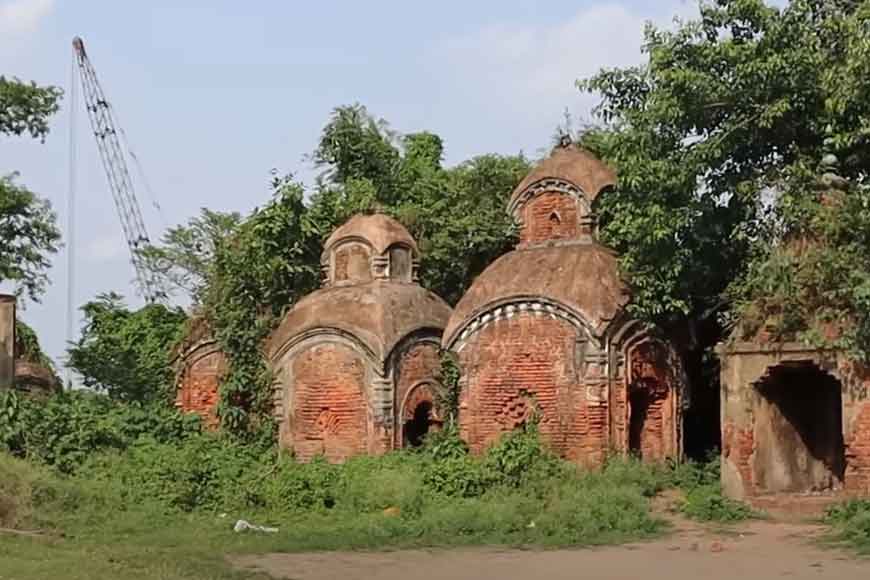
Puran Giri Gosain, popularly known as Purangir, was a member of the Daśanāmi Sampradaya, a Hindu monastic tradition founded by Adi Shankaracharya. Worshipers of Shiva, the Gosains were a unique class of trading monks, who were so rich and powerful that they often had private armies to guard trading routes. The Panchen Lama valued them for the information and intelligence they were able to provide on neighbouring countries. Hastings himself was deeply impressed with Purangir. From the Tibetan side, Puran Giri played a mediator with the English and later he was appointed the first Mahanta (an administrative title designating an organizational position or office assigned to a specific monk) of the Math. From the very beginning, Bhot Bagan has been a place of religious syncretism where Buddhism and Hinduism blended with tantric practices.
During the inception of the monastery in 1780, the Panchen Lama brought several items from Tibet, which included the idols of Mahakala and Tara. Along with that, he also brought 100 pieces of gold, carpets and cloth banners. In 1795, armed burglars raided Bhot Bagan monastery. Purangir fought the bandits gallantly but was killed in action. The thugs fled with the prized idol of Mahakala. After Purangir’s death, he was succeeded by his disciple, Daljit Giri Gosain, also referred to as Daljitgir. After Daljitgir’s death, all links with Tibet severed. The Bhot Gosain, or Bhot Mahant as they were known, did not travel to Tibet anymore, as their predecessors had. The monastery continued to be a Tibetian-Buddhist shrine till Daljit Giri remained the Mohanta. By the early 19th century, the reigning Qing Dynasty of China imposed restrictions on Tibetan pilgrims travelling to India and the monastery gradually lost its Tibetan flavor and turned into a mere shadow of its former self.
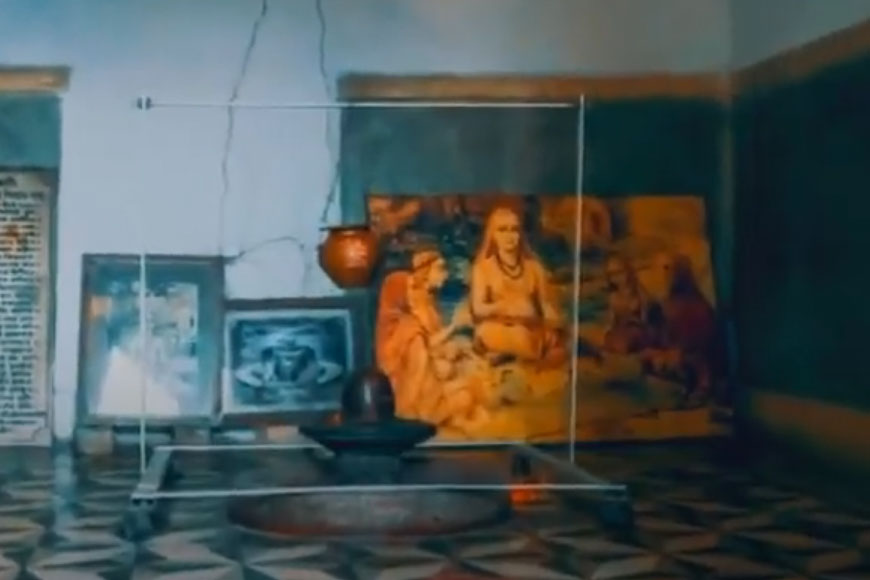 Bhot Bagan has a sporadic infusion of Shaiva and Tibetan Buddhist traditions
Bhot Bagan has a sporadic infusion of Shaiva and Tibetan Buddhist traditions
Bot Bagan monastery continued to function though the monks were now more inclined towards performing Hindu rites and rituals. Later, the Dasanami Shaivas spread their influence over the monastery and it is evident from the Atchala Samadhi Mandirs with the Shiva lingas. More Hindu rituals were introduced replacing Buddhist rites and Pragyaparamita Lakshmi was worshipped in the temple. At present, only the exquisite idol of Tara remains. Other Buddhist figurines like Cakrasamvara, Guhyasamaja, Vajra Bhrkuti and Padmapani turned into mere showpieces. The Tara idol too, was stolen in the mid 2000’s, but the police managed to recover it and restore it to the sanctum sanctorum in the monastery.
Finally, in 1905, the Gosain lineage ended with their last member, Umrao Giri, dying without a legal heir. The Dashanami Sampradaya later appointed Trilokh Chandra Giri as the Mahant but he was forced to resign in 1935 after being implicated in financial impropriety and charges of adultery! By the 1930s, the monastery was entangled in innumerable legal disputes and monks abandoned the site after several idols were stolen. Locals refer to the Bhot Bagan complex as ‘Shiv Mandir’ or ‘Shankar Mandir’ and the name ‘Sri Shankar Math’ is engraved on the building’s façade. The Math’s substantial estate that was once leased out to factories has today shrunk to 6 ½ Bighas. The original idol of Tara remains, and along with the other idols, is inside a padlocked metal cage. At present, the property is under the control of a court-appointed receiver following multiple litigations. The Tiwari family is the caretaker of the property and a local priest performs the daily rites following Hindu rituals and offers prayers.
As is common for Hindu hermits, the Gosains were not cremated but buried within the Bhot Bagan compound after their demise. The complex, enclosed with a brick built fence, is a Vaishnava Mahanta graveyard. There are eight east facing brick built Samadhi-sthala (cemetery) in the typical Bengal architectural Aat-chala style, and one west-facing brick built Sikhara style cemetary. There is also a south-facing brick built flat roofed temple, which is dedicated to Buddhist Goddess Tara. The complex also accommodates a south facing brick built house with seven arched windows on the upper storey as well as on the lower storey. There is a flat-roofed portico on the front part of the house. Within the tombs, Shiva Lingams have been built and one of them continues to be worshipped regularly. The remaining tombs are in various states of disrepair; some are almost collapsing, while slip-shod patchwork has been carried out in the most ridiculous manner in some of them.
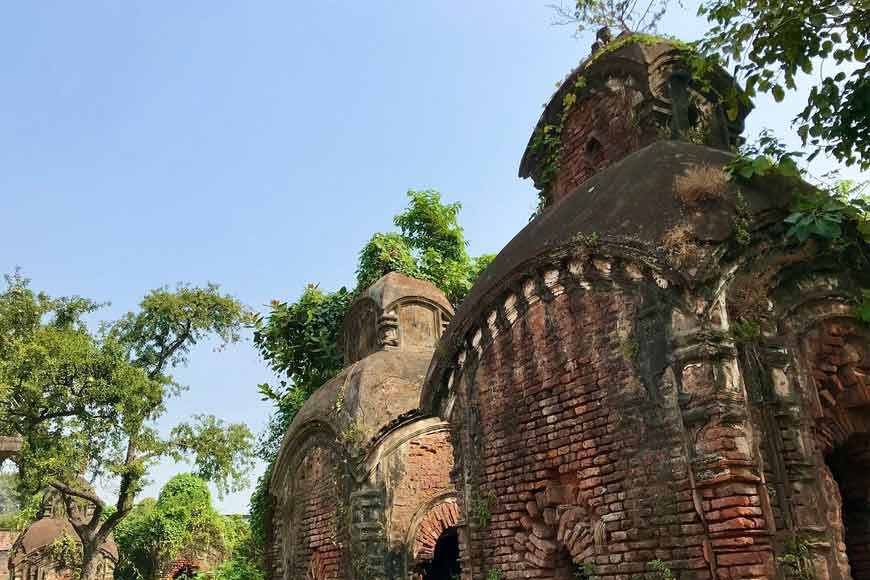
Bhot Bagan was once a peaceful haven for spiritual seekers with stunning, well-manicured and well-tended Tibetan Garden stretching for miles with huge shady trees and huts, is now a bare field where local boys play cricket. A Math Committee supervises the daily activities within the monastery. In recent years, Bhot Bagan’s maintenance and conservationwas taken over by the West Bengal Heritage Commission who put up a notice outside the complex threatening prosecution against miscreants who causes any damage to the shrine. The monastery also had a private ghat that enabled private access to the Gang River. The ghat was abandoned long ago but locals call this deserted ghat as Bhot Bbagan Math Ghat. Bhot Bagan is a priceless piece of history that continues to slowly decay and wither away.










